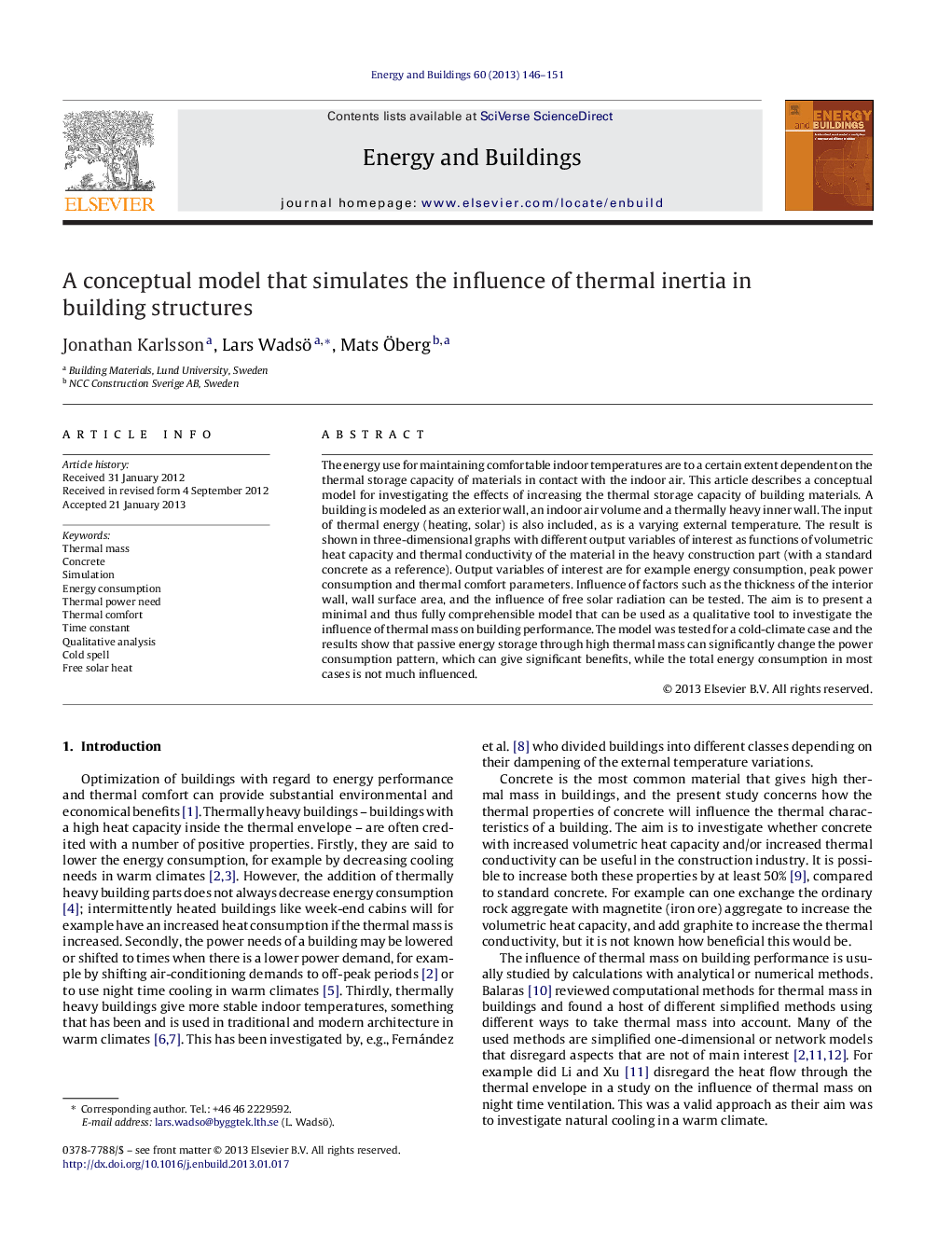| کد مقاله | کد نشریه | سال انتشار | مقاله انگلیسی | نسخه تمام متن |
|---|---|---|---|---|
| 263343 | 504073 | 2013 | 6 صفحه PDF | دانلود رایگان |

The energy use for maintaining comfortable indoor temperatures are to a certain extent dependent on the thermal storage capacity of materials in contact with the indoor air. This article describes a conceptual model for investigating the effects of increasing the thermal storage capacity of building materials. A building is modeled as an exterior wall, an indoor air volume and a thermally heavy inner wall. The input of thermal energy (heating, solar) is also included, as is a varying external temperature. The result is shown in three-dimensional graphs with different output variables of interest as functions of volumetric heat capacity and thermal conductivity of the material in the heavy construction part (with a standard concrete as a reference). Output variables of interest are for example energy consumption, peak power consumption and thermal comfort parameters. Influence of factors such as the thickness of the interior wall, wall surface area, and the influence of free solar radiation can be tested. The aim is to present a minimal and thus fully comprehensible model that can be used as a qualitative tool to investigate the influence of thermal mass on building performance. The model was tested for a cold-climate case and the results show that passive energy storage through high thermal mass can significantly change the power consumption pattern, which can give significant benefits, while the total energy consumption in most cases is not much influenced.
Figure optionsDownload as PowerPoint slideHighlights
► Building with high thermal mass does not always lead to energy savings.
► For high thermal mass to be useful, the indoor temperature must change.
► High thermal mass and differentiated heating tariffs can give lower heating cost.
► High thermal inertia can lead to better thermal environment.
► Utilizing high thermal mass for different aims can lead to conflicting demands.
Journal: Energy and Buildings - Volume 60, May 2013, Pages 146–151